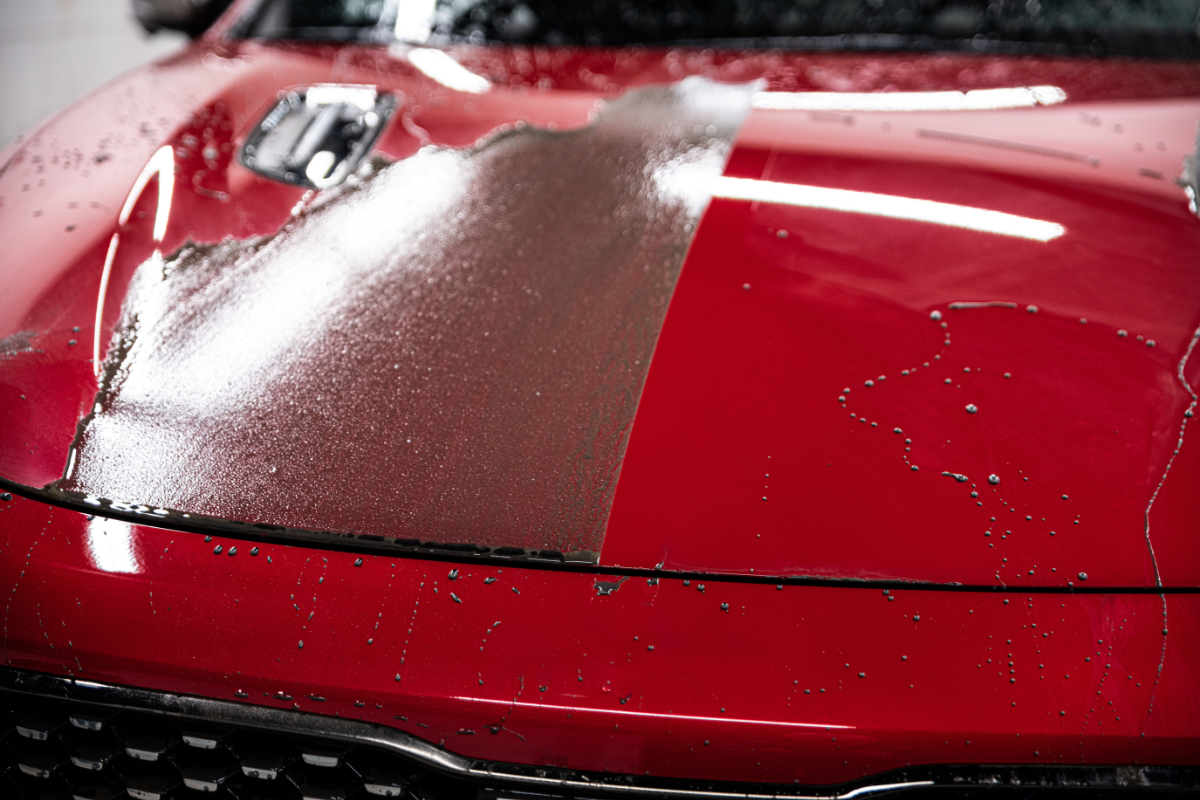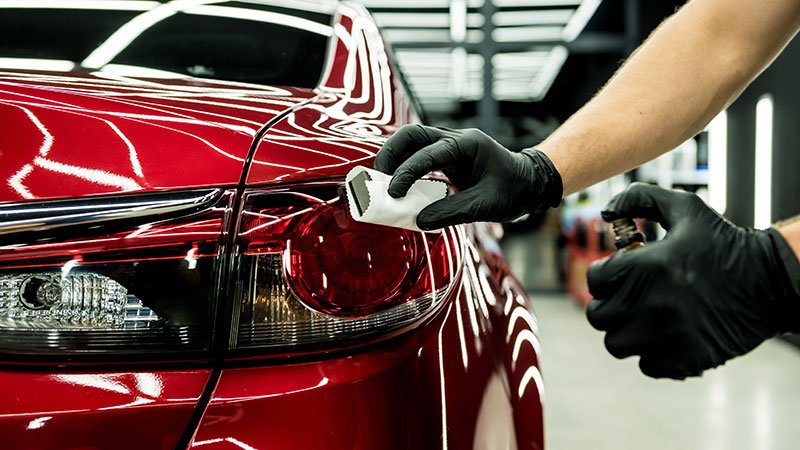Leading Ceramic Coatings San Jose Providers for Automotive Quality
Introducing the Science Behind Ceramic Coatings: How Does It Job and Why Is It Superior to Conventional Choices?
Ceramic finishings have been acquiring popularity in numerous industries for their extraordinary performance and resilience. The scientific research behind these finishings goes beyond plain surface area security, diving right into the detailed chemistry that makes them attract attention from typical choices (ceramic coatings san jose). Recognizing just how ceramic finishes work and why they surpass traditional choices is critical for those seeking to enhance the durability and strength of their materials. So, exactly what establishes ceramic finishings apart, and exactly how do they attain such amazing results?
The Chemistry of Ceramic Coatings
In recognizing ceramic finishings, delving into the intricate chemistry behind their composition is crucial for comprehending their functionality and toughness. Ceramic finishings are mainly made up of silicon dioxide (SiO2), which forms a strong and safety layer when applied to numerous surfaces. This chemical framework gives exceptional resistance to heat, chemicals, and rust, making ceramic layers extremely sought after for a large range of applications.
The chemistry behind ceramic layers includes the development of covalent bonds in between silicon and oxygen atoms, developing a stiff network that enhances the covering's sturdiness and resilience. Additionally, the visibility of various other elements such as titanium, light weight aluminum, and zirconium further boosts the covering's residential or commercial properties, using boosted solidity and attachment to surfaces.
Recognizing the chemical make-up of ceramic layers permits the customization of formulations to match particular needs, whether it be for automobile, industrial, or domestic objectives. By using the power of chemistry, ceramic coverings remain to lead the way for remarkable defense and performance in various markets.
Benefits of Ceramic Coatings

As a result, ceramic coverings make cleansing and keeping surface areas a lot easier and less taxing. In general, the wide variety of benefits used by ceramic coatings make them an exceptional option compared to standard finish approaches.
How Ceramic Coatings Bond
Ceramic layers bond to surface areas via a process that includes molecular attachment and chemical communications. When a ceramic coating is used to a surface area, it forms a solid bond by chemically sticking to the surface area at a molecular degree.
Furthermore, the chemical communications in between the ceramic finishing and the surface area even more enhance the bond. ceramic coatings san jose. These interactions permit the ceramic finish to produce a smooth and constant layer externally, offering excellent protection and resilience. Unlike traditional layers that might remain on the surface useful reference area without fully bonding, ceramic coatings develop an irreversible bond that is immune to chemicals, UV rays, and severe environmental conditions

Basically, the bonding system of ceramic finishes makes sure a efficient and resilient protective layer that outmatches standard coating choices. This superior bond adds to the resilience, scratch resistance, and long life of ceramic coverings, making them a favored selection for different applications.
Sturdiness of Ceramic Coatings
The phenomenal durability of ceramic finishings originates from their robust molecular bond and chemical communications with surface areas, making sure a durable safety layer that surpasses typical covering alternatives. As soon as applied, ceramic finishings create a strong bond with the substrate, creating a resistant obstacle versus various environmental stress factors such as UV radiation, chemicals, and abrasions. This bond is so protected that it can hold up against the rigors of everyday usage without deteriorating or deteriorating rapidly.
Unlike standard finishings that may weaken over time, ceramic coatings keep their honesty for an extensive duration, offering durable security for the underlying surface area. In general, the phenomenal resilience of ceramic coverings makes them a superior option for securing a broad variety of surfaces in various applications.
Ceramic Coatings Vs. Standard Choices
In contrast to standard covering techniques, ceramic coverings use a distinctive blend of resilience and safety abilities that establish them apart in various surface protection applications. Traditional alternatives such as wax or sealants provide a short-lived layer of protection that can wear off quickly, needing regular reapplication. On the various other hand, ceramic click here to read layers form a strong bond with the surface area, creating a semi-permanent or long-term obstacle that is very resistant to abrasion, chemicals, UV rays, and extreme temperatures.
In addition, ceramic coverings use premium hydrophobic properties compared to traditional finishes. The hydrophobic nature of ceramic layers causes water to bead up and roll off the surface, bring dirt and contaminants with it. This self-cleaning impact aids to maintain the surface's tidiness and gloss for extended durations, minimizing the need for regular upkeep.
In addition, ceramic finishes have a thicker layer compared to traditional options, providing boosted scratch resistance and defense versus minor influences. This sturdiness ensures long-lasting efficiency and assists protect the visual charm of the treated surface area for an extensive period.
Conclusion
To conclude, the scientific research behind ceramic layers hinges on their chemical composition and bonding homes, making them above standard options. The benefits of ceramic coatings include raised toughness and protection for surfaces. By recognizing how ceramic coatings job and their benefits over conventional alternatives, one can make informed decisions when taking into consideration finishing alternatives for various applications.
Unlike standard coverings that may sit on the surface area without fully bonding, ceramic layers develop a long-term bond that is resistant to chemicals, UV rays, and harsh ecological problems.
The phenomenal long life of ceramic finishes stems from their durable molecular attachment and chemical interactions with surfaces, making sure a resilient protective layer that surpasses standard layer alternatives.Unlike conventional finishings that may break down over time, ceramic finishings preserve their stability for a prolonged period, supplying resilient security for the underlying next surface.In contrast to standard layer approaches, ceramic coverings use an unique blend of toughness and safety capabilities that establish them apart in different surface area protection applications. By understanding just how ceramic coatings job and their benefits over traditional alternatives, one can make informed choices when taking into consideration layer choices for different applications.